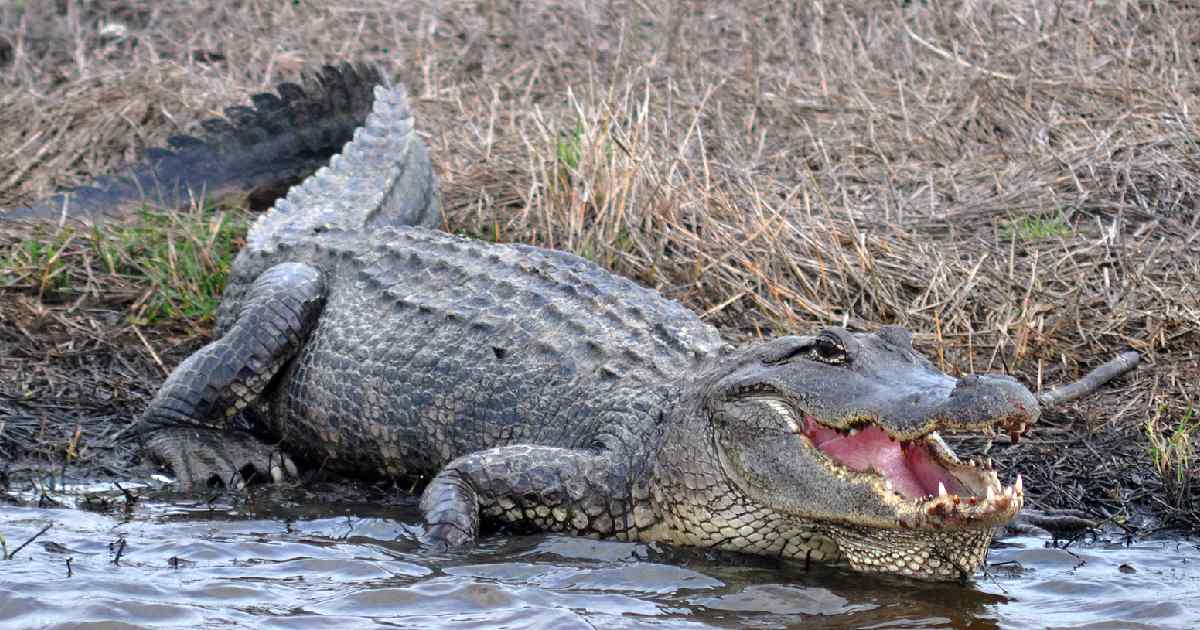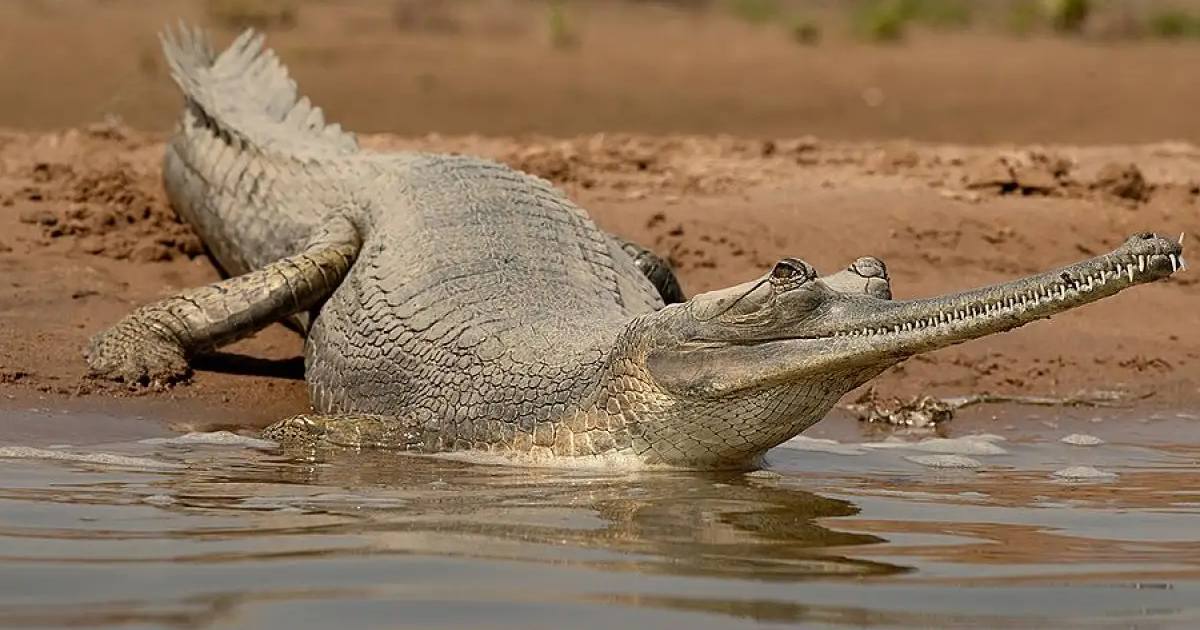When it comes to the most fearsome and awe-inspiring creatures of the animal kingdom, the largest crocodiles in the world certainly command our attention. These giant reptiles, remnants of a prehistoric era, continue to captivate and terrify us with their sheer size and power. From the mighty saltwater crocodile to the elusive slender-snouted crocodile, each species has its unique characteristics and fascinating stories. In this blog, we’ll explore the top ten largest crocodiles and alligators, diving into their impressive statistics and intriguing behaviors.
Crocodiles are ancient reptiles that have roamed the Earth for millions of years. Their formidable size and strength have made them one of the apex predators in their habitats. Crocodile hunters seek these giant reptiles not just for their danger but also for their conservation and study. In this article, we’ll explore the top ten largest crocodiles in the world, offering insights into their size, habitat, and some fascinating facts that make them stand out.
10. Slender-snouted Crocodile

- Weight: Up to 325 kg
- Length: Up to 4 m
The slender-snouted crocodile, found in West and Central Africa, is a medium-sized species weighing up to 325 kg and growing up to 4 meters long. As their name suggests, they have a slender snout, ideal for catching fish. They inhabit freshwater environments such as rivers and lakes, often in densely forested areas. The slender-snouted crocodile is currently listed as critically endangered due to habitat loss and hunting pressures. Efforts to study and conserve this species are essential for its survival.
9. False Gharial

- Weight: Up to 500 kg
- Length: Up to 5 m
The false gharial, also known as the Malayan gharial, is native to freshwater swamps and rivers in Malaysia, Indonesia, and Thailand. These crocodiles can weigh up to 500 kg and reach lengths of 5 meters. Despite their name, false gharials have a much broader snout compared to true gharials. They primarily feed on fish, but their diet can also include small mammals and birds. Conservation efforts are ongoing to protect this vulnerable species from habitat destruction and illegal hunting.
8. Mugger Crocodile

- Weight: Up to 500 kg
- Length: Up to 5.2 m
The mugger crocodile, also known as the marsh crocodile, is found throughout the Indian subcontinent and surrounding regions. These crocodiles can weigh up to 500 kg and grow as long as 5.2 meters. They prefer freshwater habitats such as rivers, lakes, and marshes. Muggers are known for their versatile diet, which includes fish, birds, and mammals. They are also known to scavenge and can sometimes be seen in human-modified landscapes, such as reservoirs and irrigation canals.
7. American Alligator

- Weight: Up to 1,000 kg
- Length: Up to 6 m
The American alligator, found in the southeastern United States, is one of the largest crocodilian species, weighing up to 1,000 kg and growing up to 6 meters long. Known for their broad snouts and dark, armored bodies, these alligators thrive in freshwater environments such as swamps, rivers, and lakes. They are an integral part of their ecosystem, helping to maintain the balance by controlling the population of prey species and creating habitats for other wildlife. The American alligator is a conservation success story, having rebounded from the brink of extinction to a stable population today.
6. Gharial

- Weight: Up to 977 kg
- Length: Up to 6.25 m
The gharial, with its distinctive long, thin snout, is primarily a fish-eater, adapted perfectly to its diet. These crocodiles can weigh up to 977 kg and grow as long as 6.25 meters. Found in the rivers of the Indian subcontinent, gharials are critically endangered, with fewer than 1,000 individuals left in the wild. Their unique snout, lined with sharp, interlocking teeth, allows them to grab large fish with ease. Conservation programs are crucial for the survival of this unique and specialized species.
5. American Crocodile

- Weight: Up to 1,000 kg
- Length: Up to 6.6 m
The American crocodile, a giant reptile, is found in the warmer coastal areas of the Americas, ranging from Florida to Peru. Weighing up to 1,000 kg and reaching lengths of 6.6 meters, these crocodiles prefer brackish waters and can often be seen in lagoons, estuaries, and mangrove swamps. Although not as aggressive as the saltwater crocodile, the American crocodile can still pose a threat to humans due to its size and power. Conservation efforts have helped stabilize their population, especially in regions where they were once hunted extensively.
4. Black Caiman

- Weight: Up to 1,100 kg
- Length: Over 6 m
The black caiman, found in the Amazon Basin, is the largest member of the alligator family. These impressive reptiles can weigh up to 1,100 kg and exceed lengths of 6 meters. Black caimans have dark, almost black scales, which help them blend into the murky waters of their habitat. They are apex predators, feeding on a variety of animals, including fish, birds, and mammals. The black caiman’s size and strength make it a formidable predator in the Amazonian ecosystem.
3. Orinoco Crocodile

- Weight: Up to 1,100 kg
- Length: Up to 6.6 m
Native to the Orinoco River basin in South America, the Orinoco crocodile is a critically endangered species. These crocodiles can weigh up to 1,100 kg and grow as long as 6.6 meters. Their population has dwindled due to habitat loss and poaching. Orinoco crocodiles are known for their relatively narrow snouts and lighter coloration compared to other large crocodile species. Efforts to conserve this species include protected areas and breeding programs aimed at increasing their numbers in the wild.
2. Nile Crocodile

- Weight: Up to 1,090 kg
- Length: Up to 6.45 m
The Nile crocodile is Africa’s largest or giant crocodile species, weighing up to 1,090 kg and reaching lengths of 6.45 meters. These giant crocodiles are prevalent in freshwater rivers, lakes, and marshlands across sub-Saharan Africa. Known for their opportunistic hunting style, Nile crocodiles can take down a wide range of prey, including fish, birds, and even large mammals like zebras and wildebeests. Their powerful jaws and stealthy ambush tactics make them one of the most efficient predators in their ecosystem.
1. Saltwater Crocodile

- Weight: Up to 2,000 kg
- Length: Up to 7.1 m
The saltwater crocodile, also known as the estuarine crocodile or “saltie,” is the largest living reptile on the planet. These massive creatures can weigh up to 2,000 kg and grow as long as 7.1 meters. Found primarily in the coastal regions of Southeast Asia and Northern Australia, these crocodiles are not just the largest living crocodiles but also the most aggressive. The Australian saltwater crocodile is particularly notorious, often making headlines for its encounters with humans. Their diet includes a variety of prey, from small fish to large mammals, and they are known for their incredible ability to travel long distances across the sea. In 2011, Cassius, an Australian saltwater crocodile (Crocodylus porosus), was recognized by the Guinness World Record as the largest living crocodile held in captivity.
Conclusion
The largest crocodiles in the world are fascinating creatures that continue to capture our imagination. From the enormous saltwater crocodiles of Australia to the critically endangered gharials of India, each species has its own unique story. Conservation efforts are crucial to ensure that these giant reptiles, or the largest extinct crocodiles, continue to thrive in their natural habitats. Whether you’re fascinated by the world’s largest crocodile in captivity or interested in the giant crocodiles that once roamed the Earth, these impressive animals remind us of the incredible diversity and resilience of wildlife on our planet.
In this journey through the world of these giant reptiles, we’ve seen how crocodile hunters seek these animals, not just for the thrill but also for the knowledge they provide. A crocodile farm breeds crocs to help maintain populations, and places like Green Island offer opportunities to learn more about these majestic creatures. From the largest saltwater crocodile ever recorded to the slender-snouted crocodile grabbing large fish in African rivers, the world of crocodiles is as diverse as it is fascinating. The Guinness World Records may track the largest living crocodiles, but every crocodile species has its place in the rich tapestry of our natural world.
Frequently Asked Questions (FAQs)
What is the largest recorded crocodile?
The largest recorded crocodile is Lolong, a saltwater crocodile captured in the Philippines in 2011. Lolong measured 6.17 meters (20 feet 3 inches) in length and weighed approximately 1,075 kilograms (2,370 pounds). He holds the Guinness World Record for the largest crocodile in captivity. Lolong was kept in Bunawan Eco-Park and Research Centre until his death in 2013.
Are Nile crocodiles the biggest?
Nile crocodiles are not the biggest; that title goes to the saltwater crocodile. Nile crocodiles can reach up to 6.45 meters (21.2 feet) in length and weigh up to 1,090 kilograms (2,400 pounds). In comparison, saltwater crocodiles can grow up to 7.1 meters (23 feet) and weigh as much as 2,000 kilograms (4,400 pounds), making them the largest living crocodile species.
Which is bigger, a crocodile or a Komodo dragon?
Crocodiles are significantly larger than Komodo dragons. The largest crocodiles, such as the saltwater crocodile, can reach lengths of up to 7.1 meters (23 feet) and weights of 2,000 kilograms (4,400 pounds). In contrast, Komodo dragons, the largest living lizards, grow up to around 3 meters (10 feet) in length and weigh up to 90 kilograms (200 pounds). Thus, crocodiles are much bigger.
What is the largest reptile alive today?
The largest reptile alive today is the saltwater crocodile. Saltwater crocodiles can grow up to 7.1 meters (23 feet) in length and weigh as much as 2,000 kilograms (4,400 pounds). These formidable predators are found in coastal regions across Southeast Asia, Northern Australia, and parts of the Indian subcontinent. They hold the record for the largest living reptile species.
Could crocodiles survive in Europe?
Crocodiles could survive in Europe if the climate were warm enough, similar to their natural habitats in tropical and subtropical regions. Historically, Europe was home to crocodile species during warmer geological periods. However, modern European climates are generally too cold for crocodiles to thrive. Suitable habitats would need to include warm temperatures and abundant water sources, conditions not typically found in Europe today.

